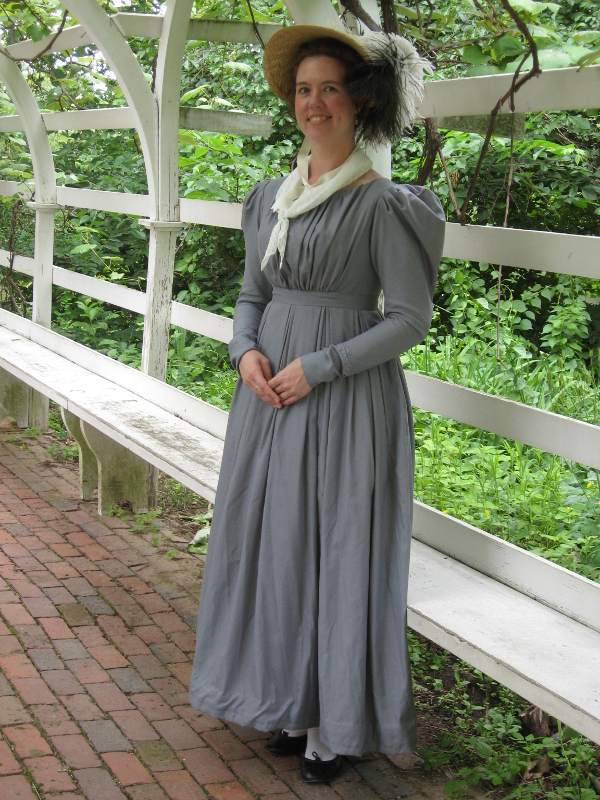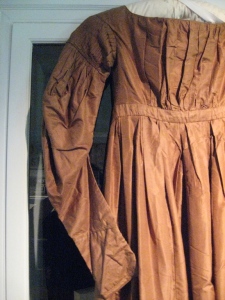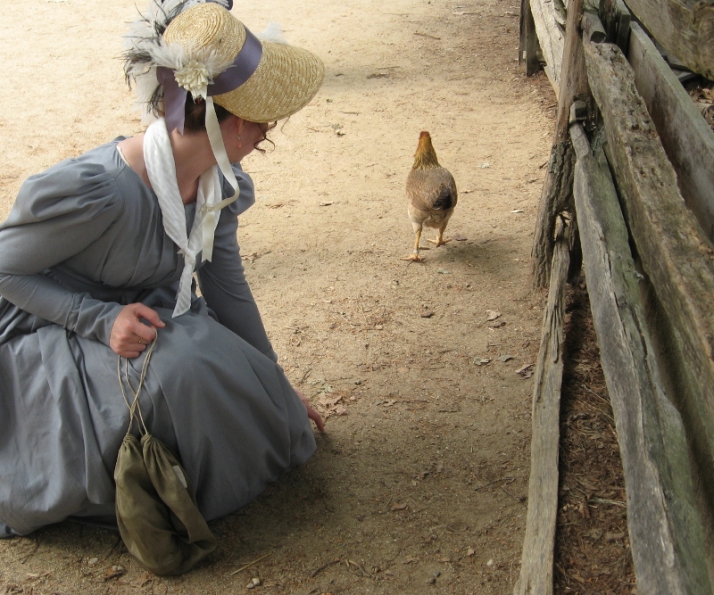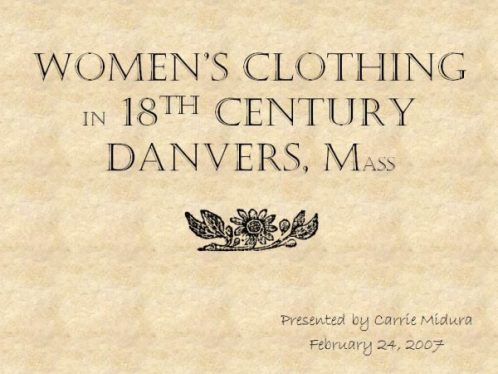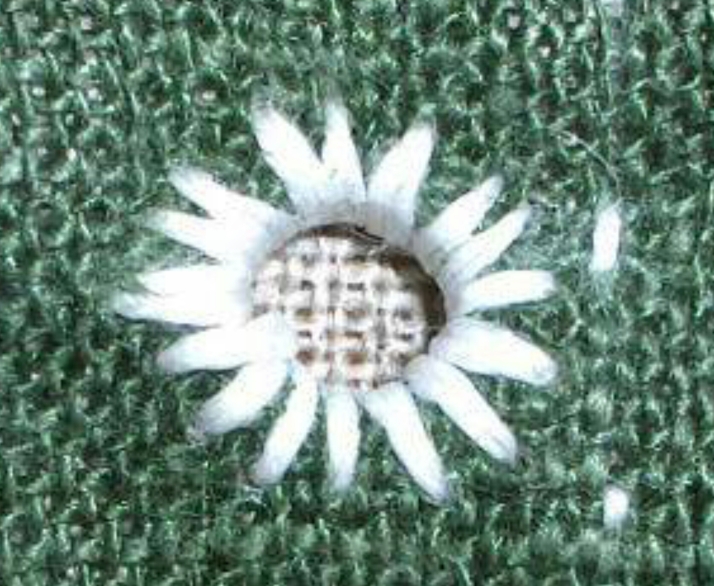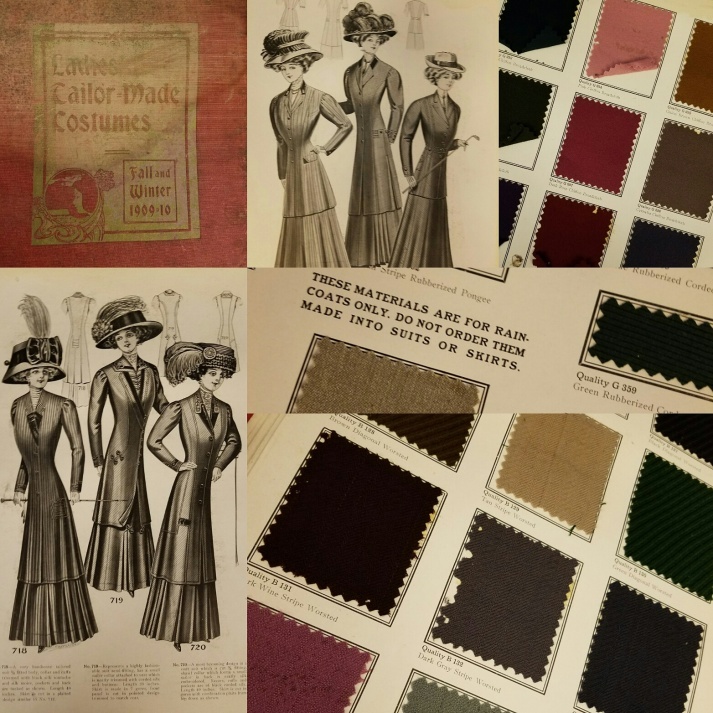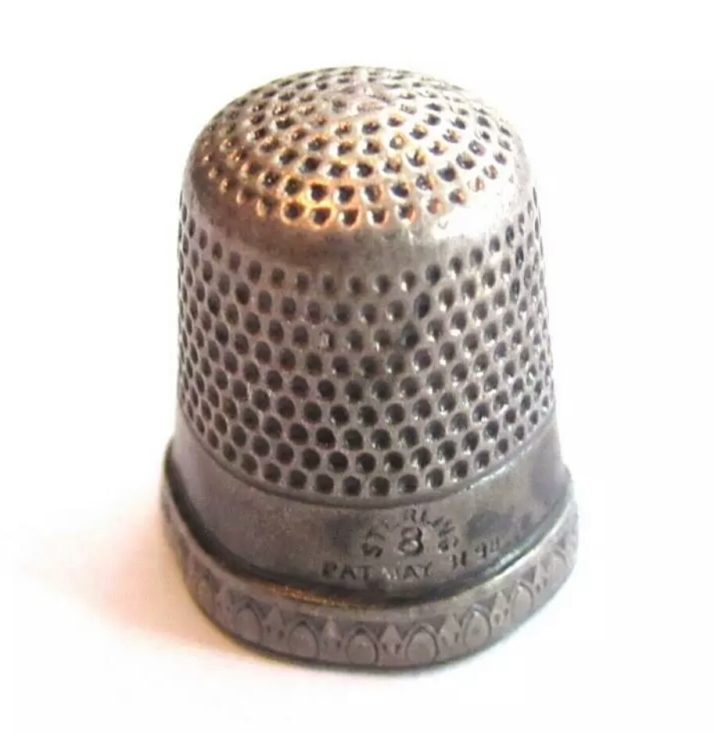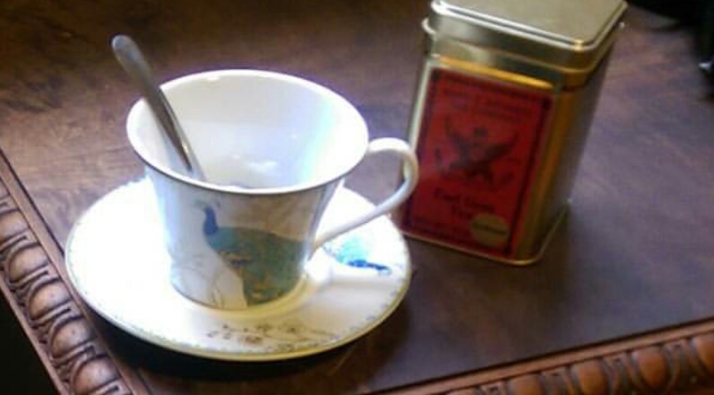I’m looking to the past a bit for today’s feature while I do my best to play into the #CoBloWriMo Day 7 prompt: Made for Someone Else. I actually spent this past Friday at Old Sturbridge Village where I introduced my 9-year old niece to the joys of a living history museum. On the ride home I asked her what she would tell her parents about our visit. Her words?
This was one of the best days of my life!

The charming Miss M wearing her frock, petticoat, and pantelets as she volunteered with me at a living history event in Andover in September 2015.
Well, you ain’t seen nothing yet kid! (And I’m pretty sure I scored some good-auntie points…)
Neither she nor I are quite ready to attend events together, but I do happen to have a lovely 1830s girls ensemble that was made for the delightful Miss M two years ago and is now just the right size for my young niece, Miss S! I shared numerous pics on Facebook and Instagram but I’m just now getting to write a bit about the outfit.
This dress was made from a combination of two patterns: Sense & Sensibility’s Girls’ Romantic Era Dress and Rocking Horse Farms’ Dress with Pantelets – plus a bit of pattern mashing & redrafting to get the exact size and shape I wanted. The frock fabric is still one of my favorites and is from the Mill Book Series Collection by Howard Marcus fabrics. Its worn over a loose bodiced petticoat and pantelets, both made of plain white cotton. The petticoat and the frock both button at the center back between the waistline and neckline.
As is typical of most of my made-for-others costuming efforts, the interior seam were sewn by hand but all hemming and seam finishes were completed by hand. In this case, that meant miles of narrow hemmed ruffles and self-fabric binding at the neck, among other details. Since this was being worn to an event that had historically seen hot weather, the frock is unlined, and the cotton for the petticoat and pantelets was quite lightweight.
 A close-up of the neckline and sleeve with a small bit of the miles of ruffling. |
|
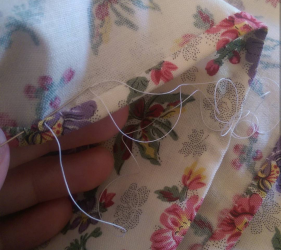 So much hemming… But also a great close-up of the fabric. |
 Ruffes! And more ruffles… and more… and more! |
And while a small number of original children’s gowns do exist in museum and private collections, it’s also fun to peruse fashion plates to look for the occasional appearance of younger models among the well-dressed adults, like this one:

Aren’t they both charming? This rather extravagant scene dates to 1833 and is from a French fashion illustration.
I still need to work on accessorizing our ensemble with a child size bonnet, some boots, and perhaps a dainty collar, but Miss M looked lovely just as she was for our event two years ago!
Later this summer, I’ll do a photoshoot with my niece and really test out her potential to be a mini-me at upcoming living history events. On a related note, I’m taking it as a good sign that she enjoyed our visit to OSV last week, and that she even found the museum display of children’s items interesting – even though there wasn’t actually anything interactive in that building!
And what was her favorite part of the display, you ask?
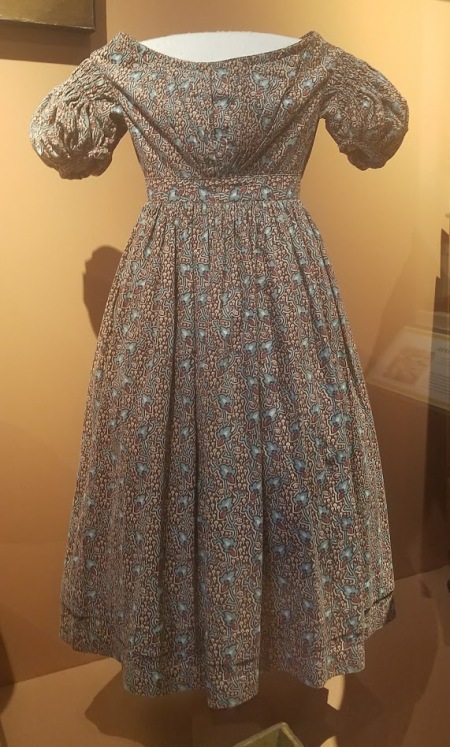
A mid-1830s childs gown, on display at Old Sturbridge Village
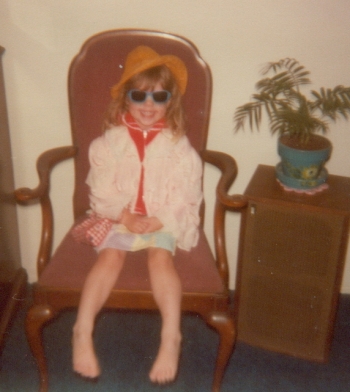








 Now to back up and tell a bit more of the story! This past weekend, Saturday and Sunday to be specific, I celebrated my birthday in a rather fabulous way by attending the
Now to back up and tell a bit more of the story! This past weekend, Saturday and Sunday to be specific, I celebrated my birthday in a rather fabulous way by attending the 



